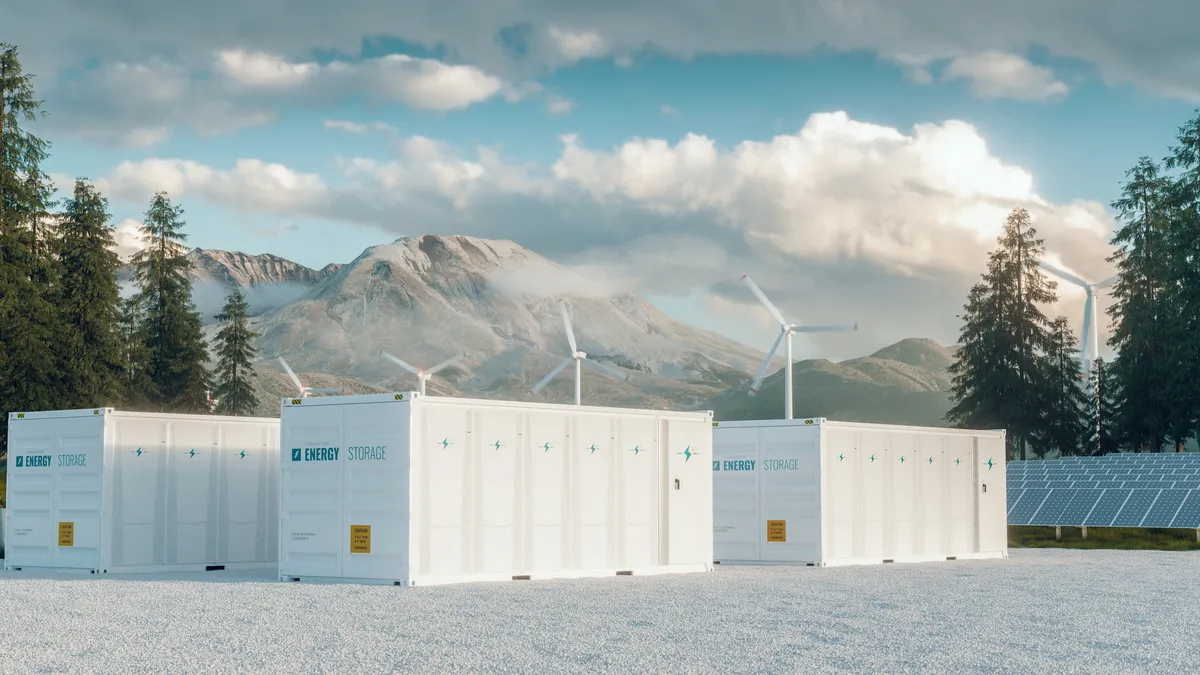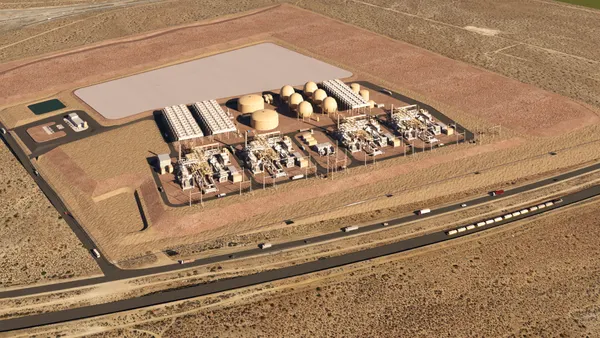Dive Brief:
- The state of Michigan will need to deploy 2,500 MW of energy storage by 2030 and 4,000 MW by 2040 to ensure grid reliability as fossil fuel generation retires, according to a new report released by the state’s Department of Environment, Great Lakes and Energy (EGLE).
- To facilitate that goal, the report recommends a “value of storage” study that could quantify the contributions storage makes to the grid, an economic gap analysis to set grant and rebate levels for customers and upgrades to building codes to include storage readiness requirements. The report also recommends new legislation requiring utility integrated resource plans (IRPs) to evaluate storage opportunities and to establish on-bill financing pilot programs for residential and commercial projects.
- “We hope the energy storage roadmap will inform investment and policies regarding energy storage and that it will lead to more discussions on actions state government and the private sector can take to increase energy storage potential in Michigan,” said Robert Jackson, assistant division director and energy ombudsman for EGLE.
Dive Insight:
In 2020, Michigan Gov. Gretchen Whitmer, D, signed an executive directive setting a statewide goal to achieve economy-wide carbon neutrality by 2050. The investor-owned utilities, Consumers Energy and DTE Energy, have goals to reach net-zero carbon emissions by 2040 and 2050, respectively. However, the broad deployment of renewables necessary to meet those goals will also require energy storage to mitigate the variability in renewable generation.
Although Michigan has the 11,500 MWh/1,916 MW Ludington pumped hydro storage facility, the report says that significant new storage capacity above that will be needed. The state has encouraged energy storage pilot programs, including a proposed order last summer asking for retail tariffs for storage resources, and both DTE and Consumers Energy have detailed small projects. Still, the state has been stuck in a “piecemeal” approach, said Laura Sherman, president of the Michigan Energy Innovation Business Council (MEIBC), which consulted on the report.
The report’s proposed targets — based on modeling of both front-of-meter and behind-the-meter possibilities and a variety of renewable growth scenarios — should light a fire under regulators and electricity providers, Sherman said. The report also includes a short-term 1,000 MW goal by 2025, which she described as a “we need to get going target” that can set up work on the longer-term goals.
EGLE’s Jackson said the report was commissioned because the state believes “energy storage will play a key role in providing quality, reliable power to Michigan homes and businesses.” The report was designed to detail energy storage capacity possibilities, optimal locations, backup power potential and the opportunities and barriers to more widespread deployment. The report was prepared by MEIBC, consulting firm 5 Lakes Energy, the Institute for Energy Innovation and Michigan State University professor Annick Anctil.
Currently, nine other states have energy storage targets, which experts say have offered opportunities for policy and technology experimentation that can inform a broader national rollout. MEIBC’s Sherman said the report can inform similar discussions in Michigan, whether that involves direct incentives, executive orders or legislation that makes it easier for storage to participate on the electricity grid.
In the short term, Sherman said, the state’s Public Service Commission is updating its IRP filing guidelines, which she said could offer more instructions on how to account for storage in the planning process and integrate it with renewable energy production. That would help utilities better model storage in their existing plans and allow for a wider range of stakeholders to understand the benefits of the technology.
“There’s definitely growing interest in storage, but a lot of questions as well. This is an observation that we will need to know more soon,” Sherman said.














